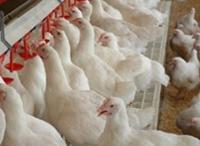Study: Enviro temperature, energy requirements

Researchers at the University of Alberta are working to better understand the effects of environmental temperatures on feed restricted broiler breeder hens.
Their ongoing study has quantified the impact that different environmental temperatures can have on the amount of feed birds require to grow at a consistent rate, according to the Poultry Science Association (PSA).
The goal of Dr Zuidhof’s team is to help optimise reproductive performance (both egg production and chick quality) of broiler breeders by manipulating, with an unprecedented degree of precision, their growth curves through fine tuning feed allocations based on short term weather forecasts.
Leading the effort is Dr Martin Zuidhof, Ph.D., an assistant professor at the University’s Poultry Research Centre. Dr Zuidhof is joined by assistant professor Robert Renema, research associate Ali Pishnamazi, and Dulal Paul, a graduate student in the department. The team works closely with several scientists at Aviagen poultry breeding company, which is helping to underwrite the research.
Determining optimal feed allocation for restricted broiler breeders is a challenge, according to Dr Zuidhof, because when environmental temperatures vary, so do the birds’ energy requirements. To avoid sending mixed messages to a bird’s metabolism, feed allocations must be increased gradually but frequently to meet target body weight gains without over- or under-compensating.
“Broiler breeders maintain their body temperatures within a very precise range. So when it’s cooler, for example, they must burn some of the energy in the food to produce body heat, leaving less for productivity. As it turns out, temperature fluctuations in breeder houses can drastically change the amount of energy available to the breeder for growth. The core of our problem has been to quantify the relationship among these variables – feed, body temperature and external temperature – and we believe we’ve taken a big step forward in doing that,” said Dr Zuidhof.
Based on data from their research, Zuidhof’s team has developed an equation specifying how a broiler breeder’s maintenance energy requirement varies as a function of four variables: body weight, weight gain, external temperature and age. This information can be used to improve and help optimise feed allocation decisions, taking weather conditions into account.
Dr Zuidhof will be presenting his team’s results at the 2009 PSA Annual Meeting, from 20-23 July, at North Carolina State University in Raleigh, USA.
The experiment
Earlier research by Zuidhof and his team had determined diurnal core body temperature patterns in feed restricted broiler breeder pullets housed at different temperatures by gathering temperature data from telemetry devices surgically implanted in the pullets’ abdominal cavities. The findings suggested that environmental temperature would have an important impact on the birds’ daily metabolic requirements.
In conducting subsequent research on the impact of environmental temperatures on breeders’ maintenance energy requirements, Zuidhof and his team assigned 800 broiler breeder pullets to eight environmental chambers for a 14-week period and grew them to breeder bodyweight targets on a feed restricted regimen. Chamber temperatures were varied across four temperatures in a 12-degree Celsius range in seven, two-week increments during the period. Both individual and group body weights were recorded systematically throughout.
Environmental temperatures were found to have a large effect on maintenance requirements, which dramatically changes the amount of energy remaining to support growth.
“Ultimately, we hope this work will help commercial hatching egg producers to maintain steadier metabolic rates in broiler breeders, which in turn will help drive breeder productivity,” said Dr Zuidhof.
Source: Poultry Science Association













